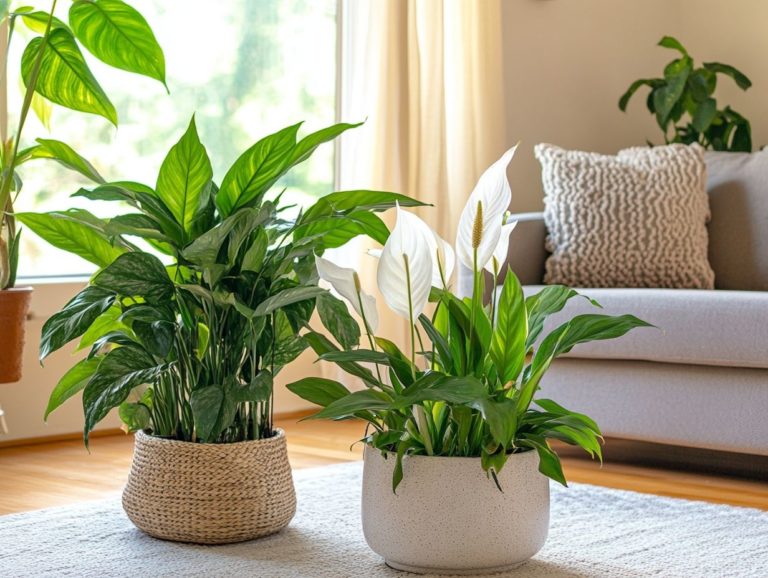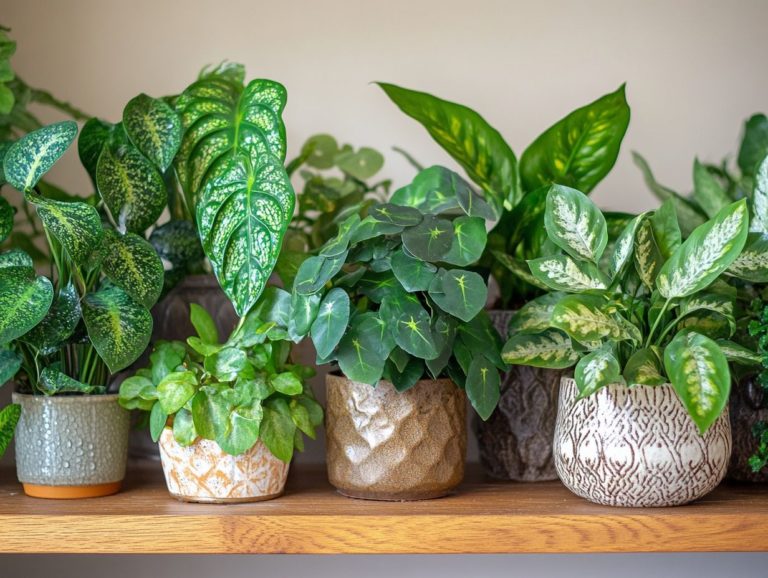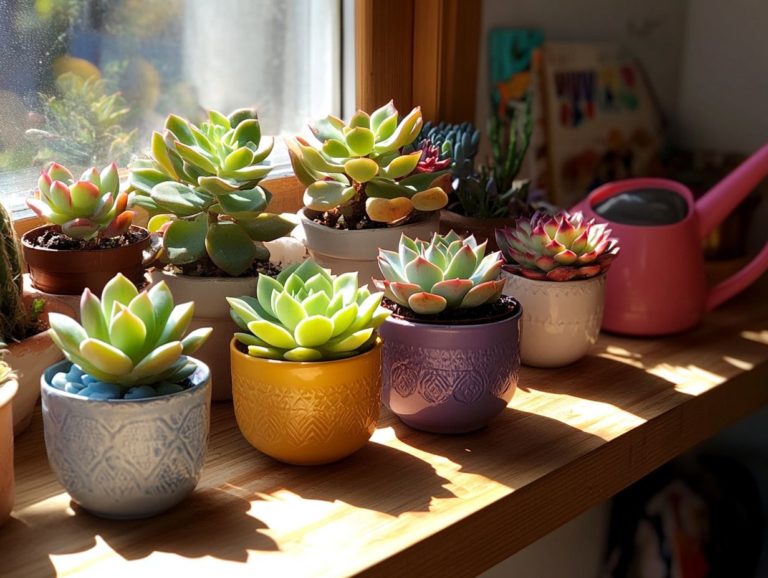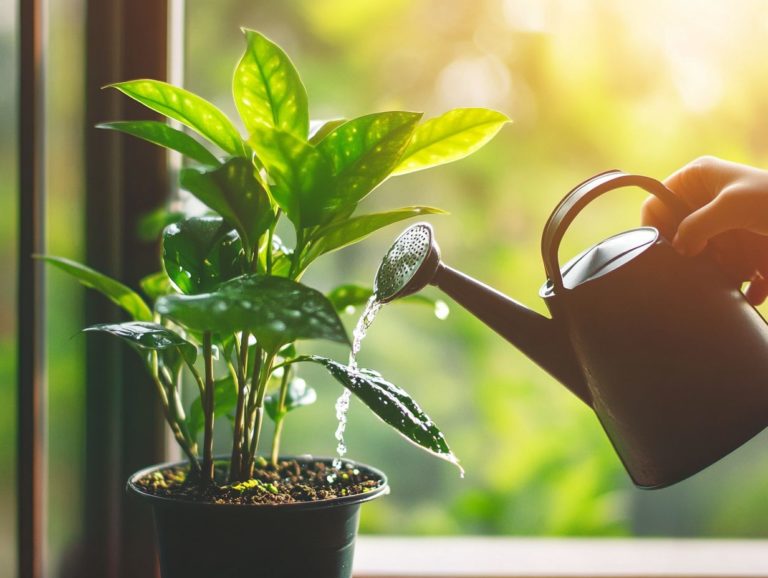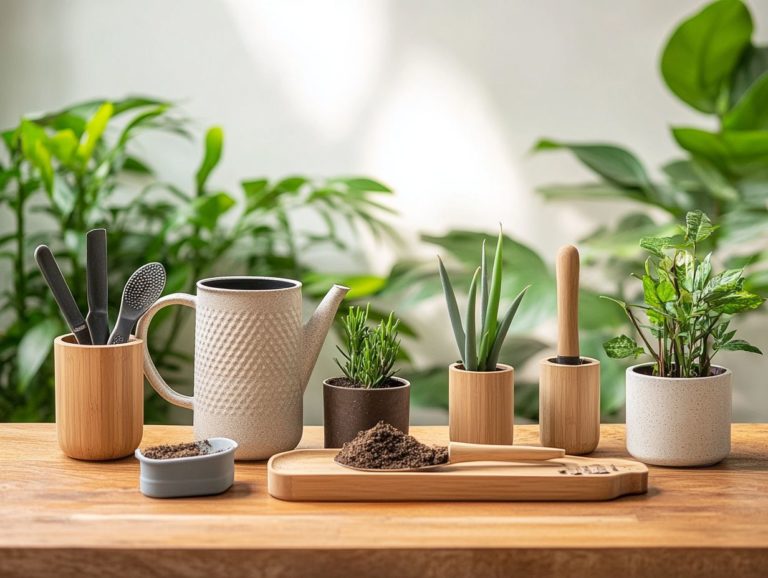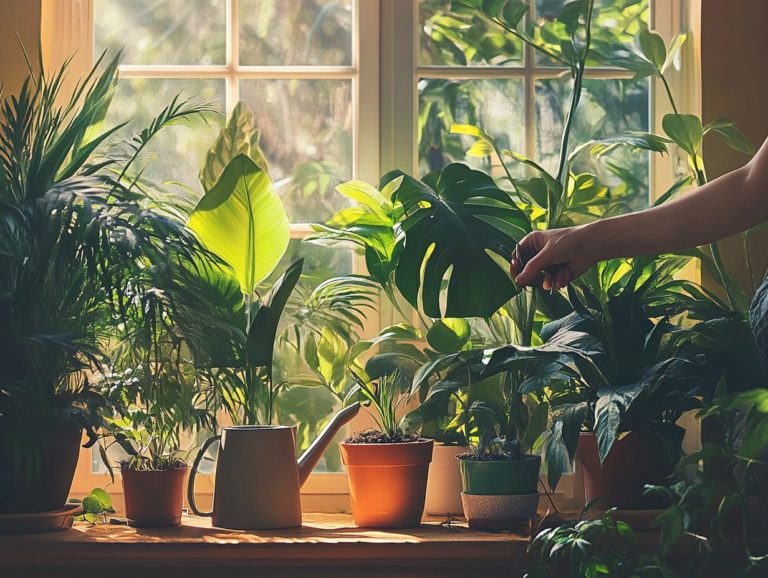What to Do if My Indoor Plant is Wilting?
Indoor plants, especially houseplants, have an amazing ability to bring life and vibrancy into your space. However, when they begin to wilt, it can understandably raise concerns.
Understanding the underlying causes and symptoms of wilting potentially caused by pests like aphids and spider mites is crucial for restoring your plants to their former glory. This guide will equip you with effective revival techniques, essential care tips to prevent wilting, and common pitfalls to avoid.
We will also identify telltale signs that indicate when to call in a professional. Let’s bring your plants back to life and make your indoor oasis thrive!
Contents
- Key Takeaways:
- Understanding Wilting in Indoor Plants
- How to Revive Wilting Indoor Plants
- Preventing Wilting in Indoor Plants
- Common Mistakes to Avoid
- When to Seek Professional Help
- Frequently Asked Questions
- What should I do if my indoor plant is wilting?
- How often should I water my drooping indoor plant?
- What if my wilting plant is rootbound in a pot with no drainage holes?
- Can fertilizer issues and overfertilization cause wilting in indoor plants?
- What should I do if my wilting plant is in direct sunlight and suffering from stress?
- Can wilting be a sign of pests and disease in indoor plants?
Key Takeaways:
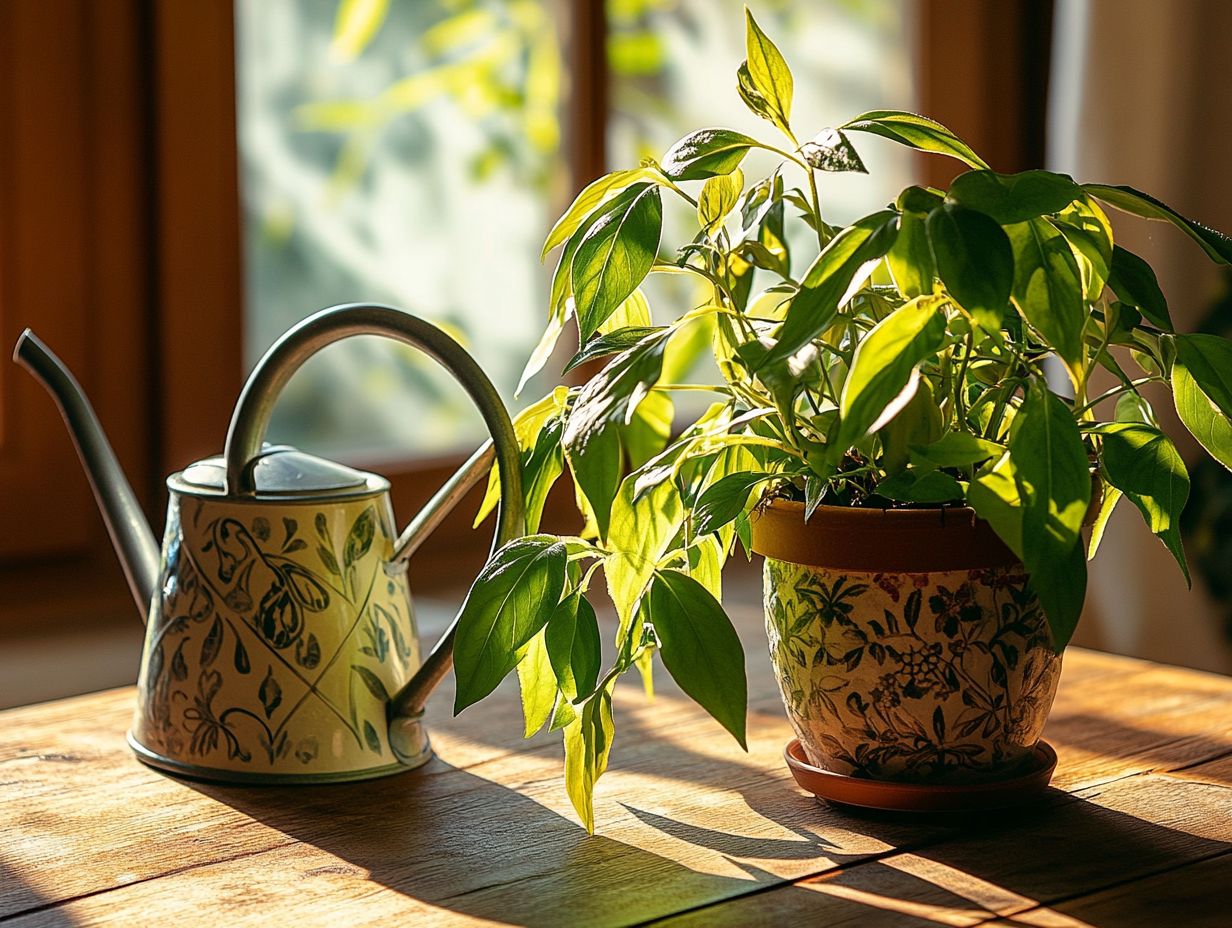
- Watering too much or too little can cause wilting in indoor plants. Check the soil moisture and adjust watering accordingly.
- If your plant is wilting, try reviving it by trimming away any dead or damaged leaves, repotting it into fresh soil, and providing adequate sunlight and humidity.
- To prevent wilting, make sure to care for your indoor plants by giving them the right amount of light, water, and nutrients, and regularly checking for pests and diseases.
Understanding Wilting in Indoor Plants
Understanding wilting in indoor plants is essential for any dedicated plant parent committed to cultivating a vibrant indoor sanctuary. Wilting, often seen as limp or drooping leaves, signals underlying stress and potential pest issues. This can stem from various factors such as overwatering, underwatering, insufficient sunlight, or pest infestations.
By recognizing these symptoms promptly, you empower yourself to take the necessary actions to nurture your plants back to health. Providing your houseplants with the attentive care they need is crucial for them to thrive.
Causes and Symptoms of Wilting
The causes of wilting in indoor plants can vary widely. Overwatering and underwatering, along with insufficient sunlight and pest infestations like mealybugs and scale, are common culprits. Signs like yellowing leaves or brown edges are clear indicators that your plant needs attention.
Understanding these causes is vital for effective plant care. Overwatering saturates the soil and can lead to root rot, where roots decay due to a lack of oxygen. This can result in wilting even when the soil feels wet because the roots aren’t getting enough oxygen. Knowing when to worry about your indoor plant can help you address these issues promptly.
Conversely, underwatering creates drought stress, causing leaves to curl and become crispy over time. Insufficient sunlight can worsen these issues, leading to leggy growth and weakened structures that invite pests like aphids and spider mites, complicating your plant’s health.
By recognizing these signs early, you can take proactive steps to restore balance and vitality to your indoor greenery.
How to Revive Wilting Indoor Plants
Reviving wilting indoor plants requires a thoughtful approach to tackle underlying issues impacting their health. Begin by carefully evaluating your plant s environment elements like proper watering schedules, humidity levels, and adequate drainage are critical.
Check if your plant has cramped roots; if so, consider repotting it into a larger container to promote healthy root growth, essential for its revival.
Step-by-Step Guide to Reviving Plants
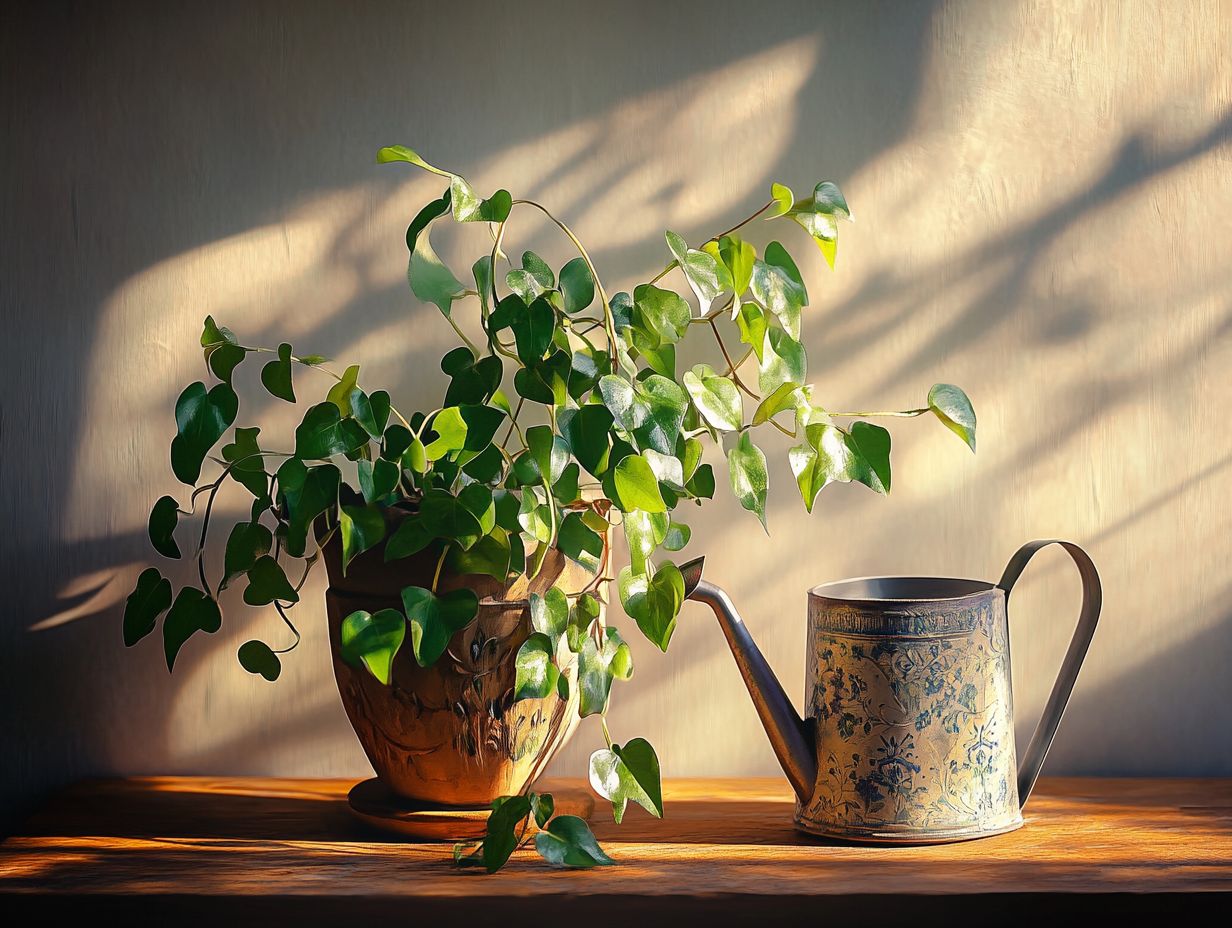
To breathe new life into wilting indoor plants, follow this guide. It outlines essential care tips, from adjusting your watering habits to optimizing humidity and soil.
Start by evaluating the soil’s ability to hold water and its drainage efficiency. Ensure they strike the right balance adequate moisture without excess water retention.
Next, gently insert your finger about an inch into the soil to check moisture levels. If it feels dry, it’s time to give your plant a drink. When you water, direct the stream toward the base of the plant and watch for proper drainage; efficient drainage is key to preventing root rot.
Consider enhancing humidity by misting the leaves or positioning a humidity tray nearby. Use fertilizer judiciously to support recovery. Look for a balanced, slow-release fertilizer that suits your plant’s needs.
Finally, make sure your potting medium is well-aerated and nutrient-rich. The right environment is essential for revitalizing your greenery.
Preventing Wilting in Indoor Plants
Preventing wilting in your indoor plants is a proactive endeavor that demands consistent care and maintenance techniques tailored to foster an optimal growth environment. Establish a reliable watering schedule now to keep your plants happy.
This involves closely monitoring humidity levels and ensuring they receive the right amount of sunlight exposure. Your plants will flourish with the right attention!
Proper Care and Maintenance Tips
Proper care and maintenance are essential for keeping your indoor plants healthy and vibrant. Focus on customized watering techniques and maintaining ideal humidity levels.
Choosing the right pot size is crucial as well. It ensures that roots have ample space to expand while preventing waterlogged conditions caused by overwatering.
Incorporating these strategies will elevate the beauty of your green companions and enhance their longevity. Understanding the specific watering needs of each plant type can lead to more effective hydration. Remember, overwatering can be just as detrimental as underwatering.
Humidity plays a pivotal role; many indoor plants flourish in conditions that replicate their native habitats. Misting or using a humidifier can truly work wonders.
To complete your plant care routine, selecting a well-suited soil mix tailored for your houseplants can transform their overall health.
Common Mistakes to Avoid
Steer clear of common mistakes to keep your indoor plants thriving and full of life! Many plant enthusiasts often find themselves overwatering or underwatering their green companions.
This results in symptoms such as yellowing leaves, brown edges, or even rootbound conditions that hinder growth. By being mindful of your watering habits and observing your plants closely, you can cultivate a flourishing indoor garden that brings joy to your space.
So roll up your sleeves and dive into plant care today! Your greenery will thank you.
Factors that Can Contribute to Wilting

Several factors could contribute to the wilting of your indoor plants. These include giving too much water, not enough water, a lack of sunlight, and pest infestations.
Pest infestations and diseases can complicate these issues, causing significant stress to your beloved houseplants.
Understanding these elements, along with pest management, is essential for maintaining the health of your indoor greenery.
Giving too much water can suffocate the roots, making it hard for them to absorb the nutrients they need. On the other hand, not enough water leads to drooping and dryness clear signs that your plants need immediate care.
Insufficient sunlight will stop plants from making food. Pests, like aphids or spider mites, can siphon off vital resources, leaving you with discolored leaves or unsightly webbing.
Recognizing these warning signs early can help you take proactive measures. Adjust your watering schedule or move your plants to sunnier spots to cultivate a thriving indoor garden environment.
When to Seek Professional Help
Recognizing when to seek help from plant experts for your struggling indoor plants can mean the difference between rejuvenation and despair.
If you’ve tried dealing with stubborn pests, severe disease symptoms, or ongoing maintenance challenges without results, it s wise to consult plant specialists for their expert care.
Signs that Your Plant Needs Expert Care
If your indoor plants display severe signs of stress, like persistent disease symptoms or overwhelming pest infestations, it s essential to seek expert care without delay. Timely attention can lead to revival.
Common indicators of distress include:
- Wilting leaves: This may indicate insufficient moisture, root problems, or pest infestations.
- Yellowing foliage: This often points to improper feeding or nutrient deficiencies.
Act quickly against visible pests, such as spider mites or aphids. They re not just an eyesore; they can wreak havoc if left unchecked.
Ignoring these signals could lead to irreversible damage, jeopardizing your plant s vitality and ability to thrive in your indoor oasis.
Conversely, consulting professionals who specialize in plant health can offer tailored solutions. This can revitalize your greenery and enhance the overall ambiance of your space.
Frequently Asked Questions
What should I do if my indoor plant is wilting?
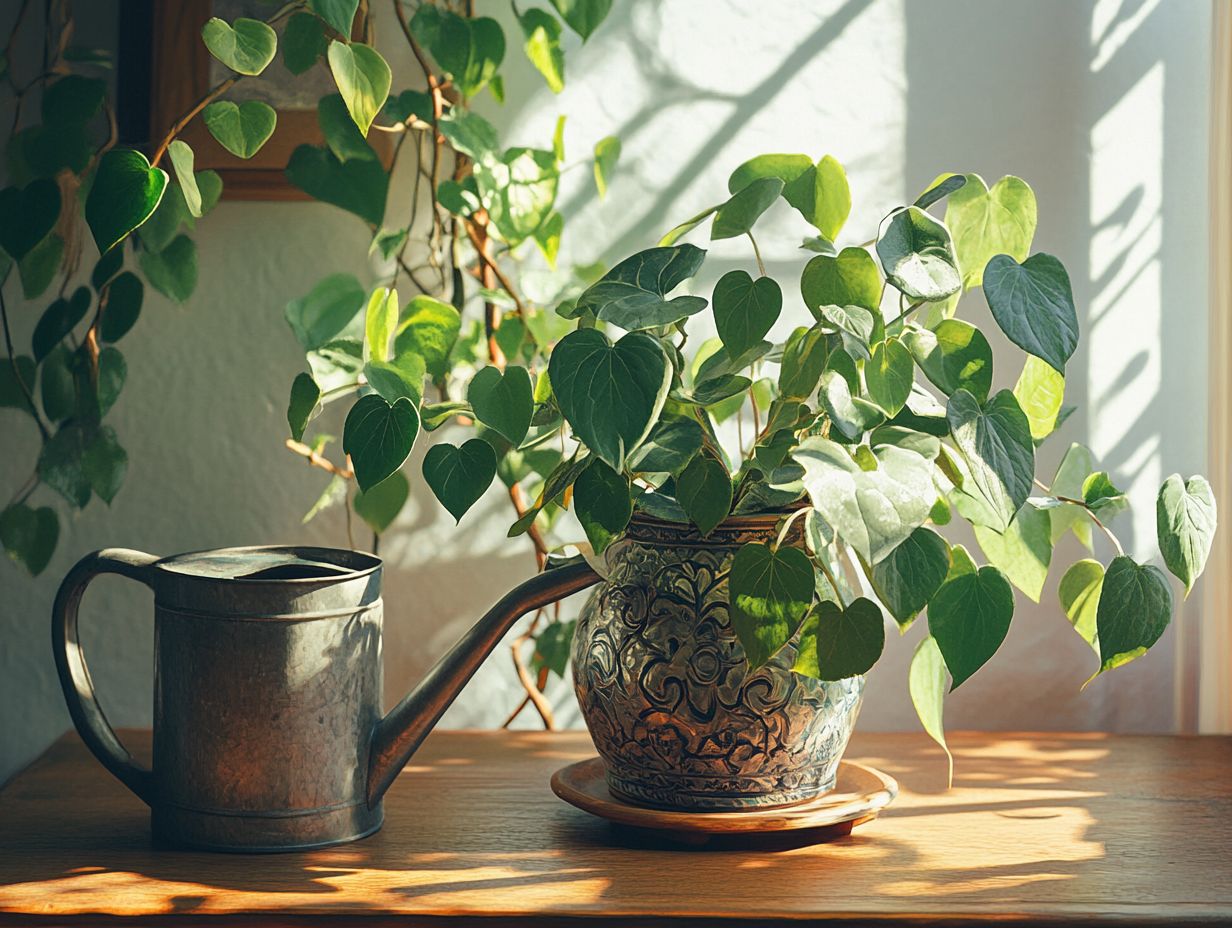
First, check the soil moisture. Wilting is often a sign of underwatering, so ensure the soil is moist but not waterlogged, allowing for adequate drainage.
How often should I water my drooping indoor plant?
The frequency of watering your indoor plant depends on various factors such as the type of plant, pot size, and environmental conditions. Generally, plants need watering when the top inch of soil feels dry to the touch.
What if my wilting plant is rootbound in a pot with no drainage holes?
If your plant is in a pot with no drainage holes and is wilting, it s likely due to root rot from waterlogged soil. Try repotting your plant into a pot with drainage holes and adjust your watering habits to prevent overwatering.
Can fertilizer issues and overfertilization cause wilting in indoor plants?
Yes, overfertilization can cause wilting in indoor plants. Too much fertilizer can lead to a buildup of salts in the soil, making it hard for the plant to absorb water and nutrients. If you suspect overfertilization, flush the soil with water and adjust your fertilizing routine.
For more tips on caring for your plants, consider visiting a plant care website or consulting with a plant expert!
What should I do if my wilting plant is in direct sunlight and suffering from stress?
If your plant is wilting in direct sunlight, it might be getting too much heat and light. Move it to a spot with indirect sunlight or provide shade during the hottest parts of the day.
Also, check the soil moisture. Direct sunlight can dry it out quickly, which is harmful to your plant.
Can wilting be a sign of pests and disease in indoor plants?
Yes, wilting can signal a pest attack on your indoor plants. Pests like aphids and spider mites can suck sap from the leaves, leading to wilting.
Inspect the leaves and stems closely for any signs of pests. If you find them, treat your plant right away to prevent further damage.

